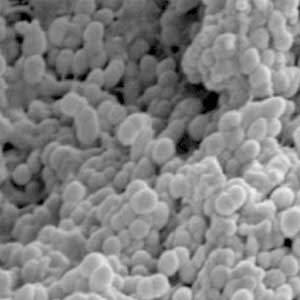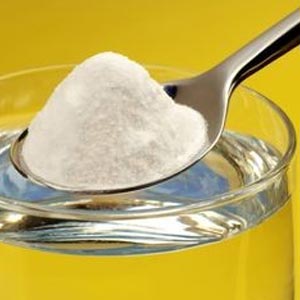Sodium bicarbonate
The fundamental reason and the motives that suggest a therapy with sodium bicarbonate against tumours is that, although with the concurrence of a myriad of variable concausal factors – the development and the local and remote proliferation of these tumours has a cause that is exclusively fungin.
At the moment, against fungi there is no useful remedy other than, in my opinion, sodium bicarbonate. The anti-fungins that are currently on the market, in fact, do not have the ability to penetrate the masses (except perhaps early administrations of azoli or of amfotercin B delivered parenterally), since they are conceived to act only at a stratified level of epithelial type. They are therefore unable to affect mycelia aggregations set volumetrically and also masked by the connectival reaction that attempts to circumscribe them.
We have seen that fungi are also able to quickly mutate their genetic structure. That means that after an initial phase of sensitivity to fungicides, in a short time they are able to codify them and to metabolise them without being damaged by them – rather, paradoxically, they extract a benefit from their high toxicity on the organism.
This happens, for example, in the prostate invasive carcinoma with congealed pelvis. For this affliction, there is a therapy with anti-fungins which at first is very effective at the symptomatological level but through time it consistently loses its effectiveness.
Sodium bicarbonate, instead, as it is extremely diffusible and without that structural complexity that fungi can easily codify, retains for a long time its ability to penetrate the masses. This is also and especially due to the speed at which it disintegrates them, which makes fungi’s adaptability impossible, thus it cannot defend itself. A therapy with bicarbonate should therefore be set up with strong dosage, continuously, and with pauseless cycles in a destruction work which should proceed from the beginning to the end without interruption for at least 7-8 days for the first cycle, keeping in mind that a mass of 2-3-4 centimetres begins to consistently regress from the third to the fourth day, and collapses from the fourth to the fifth.
Generally speaking, the maximum limit of the dosage that can be administered in a session gravitates around 500 cc of sodium bicarbonate at five per cent solution, with the possibility of increasing or decreasing the dosage by 20 per cent in function of the body mass of the individual to be treated and in the presence of multiple localisations upon which to apportion a greater quantity of salts.
We must underline that the dosages indicated, as they are harmless, are the very same that have already been utilised without any problem for more than 30 years in a myriad of other morbid situations such as:
- Severe diabetic ketoacidosis
- Cardio-respiratory reanimation
- Pregnancy
- Haemodialysis
- Peritoneal dialysis
- Pharmacological toxicosis
- Hepatopathy
- Vascular surgery
With the aim to reach the maximum effect, sodium bicarbonate should be administered directly on the neoplastic masses which are susceptible of regression only by destroying the fungal colonies. This is possible by the selective arteriography (the visualisation through instrumentation of specific arteries) and by the positioning of the arterial port-a-cath (these devices are small basins used to join the catheter). These methods allow the positioning of a small catheter directly in the artery that nourishes the neoplastic mass, allowing the administration of high dosages of sodium bicarbonate in the deepest recesses of the organism.
With this method, it is possible to reach almost all organs; they can be treated and can benefit from a therapy with bicarbonate salts which is harmless, fast, and effective with only the exception of some bone areas such as vertebrae and ribs, where the scarce arterial irrigation does not allow sufficient dosage to reach the targets. Selective arteriography therefore represents a very powerful weapon against fungi that can always be used against neoplasias, firstly because it is painless and leaves no after effects, secondly because the risks are very low.



